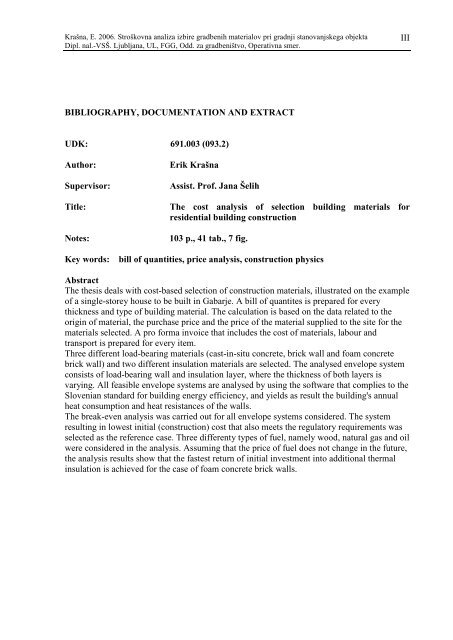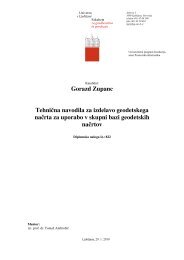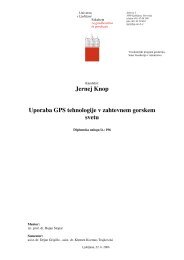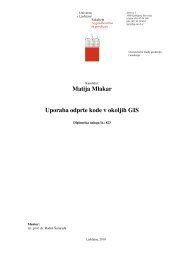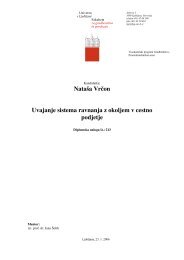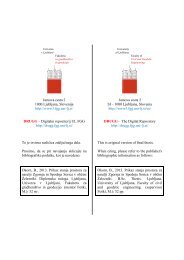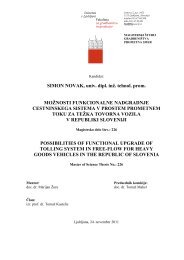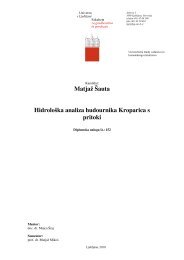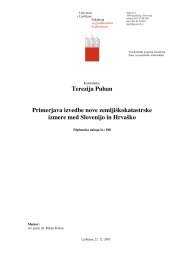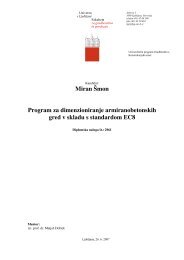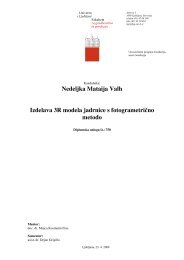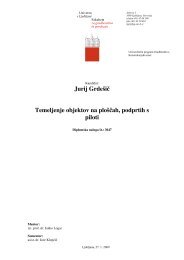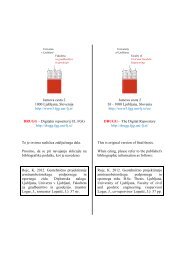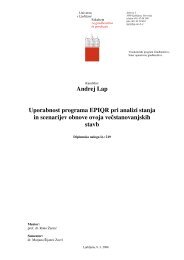Prenos (12Mb) - Univerza v Ljubljani
Prenos (12Mb) - Univerza v Ljubljani
Prenos (12Mb) - Univerza v Ljubljani
Create successful ePaper yourself
Turn your PDF publications into a flip-book with our unique Google optimized e-Paper software.
Krašna, E. 2006. Stroškovna analiza izbire gradbenih materialov pri gradnji stanovanjskega objekta<br />
Dipl. nal.-VSŠ. Ljubljana, UL, FGG, Odd. za gradbeništvo, Operativna smer.<br />
III<br />
BIBLIOGRAPHY, DOCUMENTATION AND EXTRACT<br />
UDK: 691.003 (093.2)<br />
Author:<br />
Supervisor:<br />
Title:<br />
Notes:<br />
Erik Krašna<br />
Assist. Prof. Jana Šelih<br />
The cost analysis of selection building materials for<br />
residential building construction<br />
103 p., 41 tab., 7 fig.<br />
Key words: bill of quantities, price analysis, construction physics<br />
Abstract<br />
The thesis deals with cost-based selection of construction materials, illustrated on the example<br />
of a single-storey house to be built in Gabarje. A bill of quantites is prepared for every<br />
thickness and type of building material. The calculation is based on the data related to the<br />
origin of material, the purchase price and the price of the material supplied to the site for the<br />
materials selected. A pro forma invoice that includes the cost of materials, labour and<br />
transport is prepared for every item.<br />
Three different load-bearing materials (cast-in-situ concrete, brick wall and foam concrete<br />
brick wall) and two different insulation materials are selected. The analysed envelope system<br />
consists of load-bearing wall and insulation layer, where the thickness of both layers is<br />
varying. All feasible envelope systems are analysed by using the software that complies to the<br />
Slovenian standard for building energy efficiency, and yields as result the building's annual<br />
heat consumption and heat resistances of the walls.<br />
The break-even analysis was carried out for all envelope systems considered. The system<br />
resulting in lowest initial (construction) cost that also meets the regulatory requirements was<br />
selected as the reference case. Three differenty types of fuel, namely wood, natural gas and oil<br />
were considered in the analysis. Assuming that the price of fuel does not change in the future,<br />
the analysis results show that the fastest return of initial investment into additional thermal<br />
insulation is achieved for the case of foam concrete brick walls.


